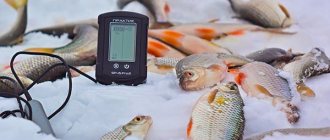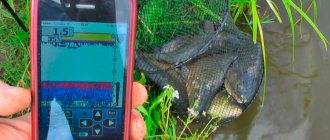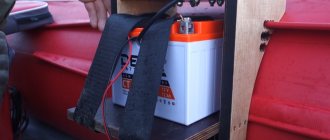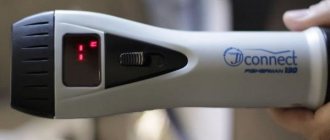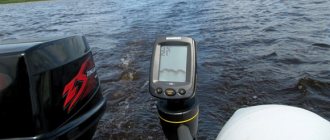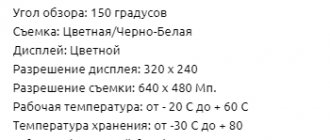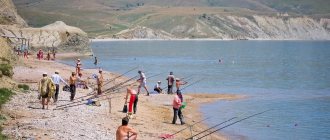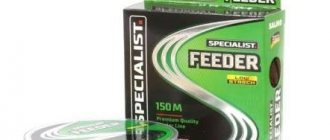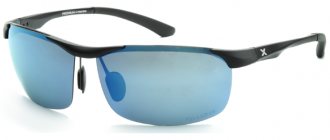Both beginners and avid fishermen have heard more than once about a wonderful technique that can help find large fish in any body of water. But few outdoor enthusiasts believe in modern technology, preferring to fish using the old method, focusing only on luck.
The focus of this article is a unique device that can really help fishermen, its name is an echo sounder. This device is guaranteed to help fishermen make their time on any body of water productive. The reader is given the opportunity to learn detailed information about this device: principle of operation, areas of application, as well as get acquainted with interesting models presented on the domestic market.
A miracle device in the service of fishermen
It’s better to start with the tactical and technical properties of the device itself. An echo sounder is a measuring device. What? In this case we are talking about the distance from the surface of the reservoir to its bottom. This is a regular sonar that can “see” under water and show the result to the user.
What will this give the fisherman? First of all, the user receives the topography of the bottom of the reservoir. Moreover, the echo sounder is capable of not only clearly showing all the depressions and irregularities, but also specifying the type of soil (stone, sand, silt, clay). Secondly, the device is capable of identifying objects directly in the water. It doesn't matter whether they move or not. It is this property of the device that allows the fisherman to determine whether there is a fish nearby and what its approximate size is.
Basics[ | ]
According to the principle of operation, sonars are:
- Passive
- allowing you to determine the location of an underwater object by sound signals emitted by the object itself (noise direction finding). - Active
- using a signal reflected or scattered by an underwater object, emitted in its direction by a sonar.
The active sonar "Asdik" in its original primitive form was invented at the end of the First World War in France by Konstantin Shilovsky and Paul Langevin. The basic principle of its operation has remained unchanged to this day. However, over the years, the effectiveness of sonar
increased significantly, the scope of its use expanded, and the number of classes of ships from which it could be used to search for and attack enemy submarines increased.
The basis is a transceiver, which sends sound pulses in the required direction, and also receives reflected pulses if the parcel encounters any object on its way and is reflected from it. These sendings and reflected signals, after conversion, sound very similar to how the word “ping” is pronounced. That's why they became [ who?
] called a “pingset” (English ping set), the work on it was called “pinging” (English pinging), and the officer-specialist in anti-submarine warfare - “pinger” (English pinger).
By rotating the transceiver like a spotlight, you can use a compass to determine the direction in which the “ping” was sent, and therefore the direction of the object from which the “ping” was reflected. By measuring the time interval between sending a pulse and receiving the reflected signal, you can determine the distance to the detected object.
Types of echo sounders
It is logical to assume that such an interesting device can only be used while directly on the water surface of a reservoir. However, this is a misconception, and it all depends on what modification of the echo sounder the user has. We figured out what kind of device this is, it’s time to find out more interesting details.
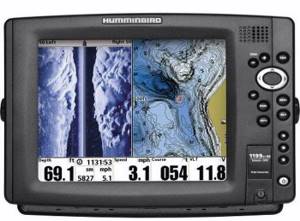
Stationary echo sounders are considered the most popular in the world. They are installed on the dashboards of boats, fishing schooners, and are also used on other water transport not related to fishing. A special sensor (transducer) from the device is located on the bottom of the boat; its task is to scan the bottom.
Portable wired fish finders are a smaller version of stationary devices and are widely used by ordinary fishermen from boats and boats. Such devices have fewer sensors, and the mechanism itself is a little simpler.
Also on the market, the buyer can find portable wireless echo sounders. With such devices, bottom scanning can be carried out from the shore, throwing the transducer at a distance of 50-100 meters with a conventional spinning rod.
Features of echo sounders for different types of fishing
There are three main types of fishing, each of which may require a fish finder with specific characteristics:
- fishing from a boat;
- winter fishing;
- fishing from the shore.
So-called universal echo sounders are suitable for all of the listed species. There are many similar devices on the market now. If you are predominantly interested in one type of fishing, pay attention to the following important points.
For fishing from a boat. Since for the correct operation of the echo sounder it is important to properly mount its emitter on the boat, the buyer must immediately think about the fasteners. Fasteners may be included with the device or sold separately. The fastener can be through or transom (for inflatable boats). For a boat echo sounder, the number of beams used is also quite important, since this gives a more complete picture of what is happening around.
For winter fishing. The basic requirements for an echo sounder intended for winter fishing are the ability to operate at significant sub-zero temperatures, a high-capacity battery (it is known that devices discharge faster in the cold) and good protection of the case from moisture.
Where does quality start?
Since an echo sounder is a device for measuring, and not for displaying an image, first of all, all potential buyers need to know that they are purchasing a scanner, and not an LCD TV. Accordingly, the quality requirements must be appropriate.
The most important criteria in the device are the number of beams and their scanning angle. The higher this indicator, the more efficiently and quickly the device receives information. For example, 6-beam echo sounders allow you to scan the bottom while a boat passes through the water surface on a glider (60 km per hour or more). Single- and double-beam devices are popular.
The second criterion is security. The echo sounder will be used close to water and at different times of the year, so its performance directly depends on the protection of the housing (water, shock, cold, heat). Naturally, this parameter also affects the cost of the device and in no case should it be neglected.
How to choose a fish finder
The modern market for fishing accessories offers a large range of sonars; the range includes wired and portable models of echo sounders for coastal and winter fishing, as well as for fishing from a boat. To select the most effective device, you should focus on the technical parameters that have a key impact on the operational properties of the echo sounder. Secondary selection criteria affect the ease of use of the device.
Important parameters
- Transmitter power - this indicator directly affects the quality of the received signal. The higher the power, the clearer the picture of the underwater world will be.
- Transducer frequency – the depth and width of the scanned area depend on the parameter. When choosing a frequency, you should consider your fishing method. A high indicator will provide a detailed image at a minimum depth, while a low-frequency transducer will allow you to scan the bottom at greater depths, but the image quality will not be as clear.
- Sensitivity is a characteristic that affects the ability of the receiver to catch waves; the indicator is directly related to the power of the device. An insensitive device will not be able to pick up powerful signals; an overly sensitive one will create interference on the screen. Therefore, it is better to choose an echo sounder with the ability to adjust sensitivity.
- Number of beams - budget models, as a rule, are equipped with one beam, while expensive echo sounders have from 4 to 5 beams of different frequencies. The greater the number of rays, the more extensive and complete the bottom image on the display.
- Features of the display – a well-chosen screen will allow you to view the received data in detail. Color and monochrome screens can be used in echo sounder designs. Color displays must have an anti-reflective coating; the number of gray shades in monochrome models should not be less than 4.

Minor Criteria
- maximum depth of echolocation;
- presence of a temperature sensor;
- method of mounting the transducer;
- additional features;
- device design.
Technical characteristics and features of the top 7 best echo sounder models are presented in the review.
When it comes to convenience
But the size of the screen and its type can be paid attention only after the buyer has decided on the basic characteristics. As practice shows, users give preference to the size of the display rather than its color. After all, in fact, the beauty of the fish or the bottom of the reservoir is not what the fisherman needs - he needs the relief and the presence of living creatures. In addition, a device with a color display consumes more electricity.
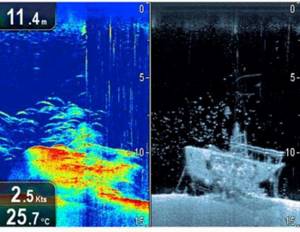
True, many potential buyers think this way, until fate presents them with a Lowrance Elite-3x echo sounder. A device costing 10,000 rubles on the domestic market quickly forces many fishermen to make a purchasing decision. The fact is that this budget representative is not only equipped with a color liquid crystal display and has excellent protection against shocks and splashes, but is also able to quickly scan the bottom of the reservoir. After all, its transducer has two sensors that operate in different frequency ranges (83 and 200 kHz).
How does an echo sounder work?
Pulse sending frequency
The echo sounder sends pulses at a certain frequency. Typically, manufacturers of devices of this type use the following frequencies: 192/200 kHz, 50 kHz, 83 kHz, 455 kHz and 800 kHz. All designated pulse sending frequencies by the echo sounder sensor have both advantages and disadvantages. Therefore, when choosing a device, you must take into account the specific conditions in which you plan to use the echo sounder.
The first, second and third of the listed frequencies are used most often. Their difference is as follows:
| 192 or 200 kHz | 50 kHz | 83 kHz |
|
|
|
Two relatively new frequencies are 455 kHz and 800 kHz. The first operates at a greater depth than 800 kHz. However, the second is distinguished by a higher quality of drawing details of the bottom structure. 800 kHz is best used in depths of 18 meters or less, although at high speed it is also suitable for exploring deeper waters: since more pulses are sent, the image will be more detailed than with transducers with other frequencies. You can find devices in Lowrance line of fish , suitable for solving almost any problem.
Operating principles of an echo sounder
The pulse sent by the echo sounder sensor is reflected from various objects that it encounters on its way, or the bottom. This allows you to collect information about everything that is in the water column: the number, size, density of objects, and the structure of the bottom. The display processor processes the received information, resulting in a moving graphic image being displayed on the screen. Because signals are sent and received many times per second, a continuous line is drawn on the screen to indicate the bottom. Garmin , Raymarine , Hummingbird echo sounders are almost always equipped with either color or monochrome displays of various sizes
Higher, faster, stronger
Yes, any owner wants his sonar to be able to work with navigation maps and have a GPS system in addition. All this is quite realistic, only the cost of such devices will be appropriate (prices start from 30 thousand rubles). When choosing your first echo sounder, the main thing is to stop in time and make a decision for yourself about what is really a priority.
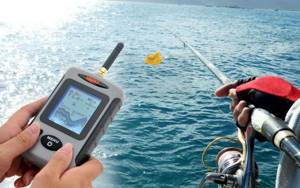
Often, many avid fishermen agree that any equipment is directly proportional to the application. For example, the Lowrance Elite-3x echo sounder (83-200 2 beams) has positive reviews only from owners of motor boats and boats with electronic ignition. Yes, although the device is portable, it has problems with power supply (the device will work for no more than 24 hours on a single charge). But what about the rest - carry a bag of batteries with a supply for a week?
Sonar selection options
The industry produces echo sounders in series. The series of echo sounders differ in the installed sensors, screen size, and the presence of a GPS navigation module. Before purchasing a device, the fisherman needs to decide for what types of fishing he needs an echo sounder.
Number of rays
The echo sounder can be equipped with a sonar with a number of beams from one to six.
For fishing from an anchored boat with float or bottom gear, a simple single-beam echo sounder is sufficient. With the help of sonar, the fisherman will find a hole, a sunken tree, and find fish under the boat.
To find fish on a large lake or reservoir, a device with a two-beam transducer is used. A wide sonar angle will help you locate water bodies faster.
For fishing at great depths, you need a transducer that scans the water with three or more beams.
Screen size
The information received from the sonar sensors is displayed on the echo sounder screen. The larger the screen diagonal, the more comfortable it is to look at it. The industry produces echo sounders with black-and-white (monochrome) and color screens with diagonals from 2 to 16 inches. The large screen of the echo sounder can be programmatically divided into several parts and simultaneously display information from several sensors. To assess the prospects of a place, bottom topography, and the presence of fish on a small screen, you will have to change the image scale.
For infrequent trips into nature, for fishing from an anchored boat or for ice fishing, an echo sounder with a screen diagonal of 2 - 4″ is sufficient. A small screen will allow you to evaluate the prospects of a place; small-sized devices have a low price and consume little energy.
For spinning fishing using a motor boat, you need an echo sounder with a screen diagonal of 5 - 7 inches. On the large screen you can see information from a wide bottom scanning cone.
For trolling fishing in a reservoir or the sea, an echo sounder with a screen diagonal of 7-16 inches will be comfortable for the eyes. If necessary, the screen can be divided into several parts and simultaneously display information from sensors and a navigation map of the reservoir.
Sonar operating depth
Each transducer has its own calculated scanning depth. It shows at what maximum distance from the keel of the boat to the bottom the sonar operates. The depth value is indicated in the device passport.
For fishing on a river or small pond, a value of 25 - 30 meters is sufficient.
On large lakes there may be deep holes in which fish accumulate, so to scan the bottom you need a device with a working depth of up to 80-100 meters.
To catch large fish in the sea, you need devices with operating depths of up to 300 meters.
Simple and practical solution
Since an echo sounder is a device for scanning the bottom, it is better for a potential buyer to start getting acquainted with simple models that are oriented for this task. The domestic device “Praktik ER-6 Pro” is the golden mean in this segment. After all, it is able to satisfy the buyer with an affordable price (5000 rubles) and excellent functionality.
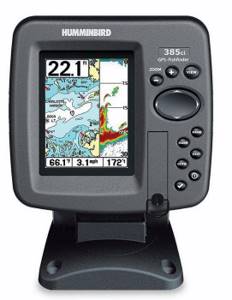
An inexpensive echo sounder can scan the bottom and provide the user with detailed information on the screen. The device is also capable of finding fish in the water and notifying the user about it. As for the protection of the body, judging by the reviews of the owners, there cannot be a single question at all. The echo sounder works great in any weather conditions (from 50-degree heat to 20-degree frost).
What is an echo sounder?
An echo sounder is a device for sound detection of objects under water. To get a good echo signal from a sufficiently large depth, you need a high-power transmitter. In principle, there seems to be no place to tap really deep places, and why is this necessary? This is necessary because a powerful transmitter will provide the fisherman with a more detailed picture of everything that is happening under water. That is, with the help of a powerful transmitter we will be able to better “recognize” the structure of the bottom, all kinds of “small objects” (fish fry, for example) and much more.
How the echo sounder works
Electrical pulses must be converted by the emitter with the least loss. The pulses come from the transmitter and are converted into sound signals. Naturally, the emitter must also convert even the weakest echo signals. Regarding the receiver, it must flawlessly fulfill its purpose, that is, amplify a weak signal in order to distribute electrical impulses.
display (screen) must be of high quality and have high resolution so that small objects become clearly displayed (visible) on the device screen. Good contrast coupled with high image clarity will save you from glare in sunny weather. If you are fishing from a large boat or speedboat, you may want to consider a larger screen.
The question remains: how to find out whether the above factors correspond to the needs of a particular fisherman or not?
Fishing from the shore
Wireless echo sounders are quite popular among fishermen who do not have surface vehicles and prefer to cast their rods from the shore. To tell the truth, this category of people tries not to trust electronic devices and relies on their own experience or the recommendations of other fishermen. As practice shows, broken gear and poor fishing without an electronic device are considered a common failure. But everything could be completely different.
Unlike a wired device, in wireless echo sounders the transducer communicates with the head unit via a radio channel, vaguely reminiscent of a Wi-Fi signal. Therefore, the main criterion for choosing a decent device on the market here is the power of the wireless transmitter and receiver with which the echo sounder is equipped. This is not the only important criterion. As with other devices, the device requires a high-quality scanner that can work at a wide angle.
Additional functions of the echo sounder
The choice of a specific echo sounder model may be influenced by the presence of additional functions that, in some cases, make fishing easier.
• Determining the distance to the fish will help you adjust the casting distance of the bait.
• Determining the size of fish can be useful for spinning anglers. When this mode is turned on, the echo sounder will show only large predatory fish on the screen, removing small fish and roach from the display.
• The temperature sensor shows the number of degrees in different water layers. Peaceful fish often feed in places with warmer currents. Knowing the depth at which the warm stream flows, the angler can choose the right horizon for casting bait.
• Flasher. By connecting this echo sounder option, the angler can watch in real time how a passing fish is interested in the bait. This mode is especially relevant for sedentary winter fishing.
• The GPS navigation module can show the speed and location of the vessel. The mode is relevant for trollers and lovers of fishing in the sea and large reservoirs.
Interesting offers for real fishermen
A wireless fish finder is quite easy to spot in a store window. You can distinguish it from analogues by its configuration. Next to the measuring device, the buyer can see a simple plastic toy that vaguely resembles a duck. This is a wireless scanner that needs to be thrown over a long distance. As for the head unit, there is nothing to surprise the buyer - an ordinary echo sounder. This (photo can be seen below) suggests that the scanning technology itself does not change, the only difference is in the method of data transmission.
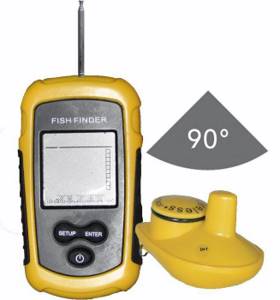
Lucky products have proven themselves well on the market. These devices are easy to use and have an affordable price (up to 10,000 rubles). True, their transmitter is weak - the signal is stable only at a distance of 50-60 meters. But products under the Fishhunter brand are sold without a head unit, offering all functionality to the user on smartphones running the Android system.
Which echo sounder to choose
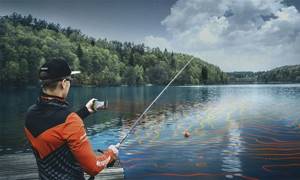
1. Shallow small reservoir fishing equipment needs one beam from a portable model, black and white screen, 45 degree viewing angle, depth 25-30 meters, with temperature sensor, screen size 2 inches, transmitter power 150W, with protection against getting into water. Screen resolution 240x240 pixels.
2. To study the bottom and bottom fishing on a spacious lake, you need a device with two beams, with viewing angles of 16 and 28 degrees, a 4-inch screen, black and white or color, resolution 240x320, a fish distance meter, an estimated depth of 100 meters, a sensor temperature and splash protection IP x6. Transmitter power 200-300 W. You can choose from portable or stationary devices.
3. To find a fishing spot in winter under the ice, use a frost-resistant black and white screen with a resolution of 240x320, 3 inches, a beam with a 20-degree field of view, a research depth of 30-40 m, with a Flasher function, and a transmitter power of 150 W.
4. Active search for a school of fish or trolling requires a four-beam stationary echo sounder, designed for a depth of up to 450 meters, with a 7-10-inch screen, color image, determination of distance to fish, GSM module, speed sensor, fish size locator, viewing angles 20/60/86/55 degrees, 500W power. Screen resolution from 480x480 pixels.
Chartplotter with echo sounder
The attention of potential buyers has always been attracted by expensive devices that are present in the windows of any specialized store. True, not everyone understands the price (50-100 thousand rubles). In this price range you can only find a chartplotter-echo sounder. What it is? In simple terms, this is a navigator with built-in sonar. Yes, this is an echo sounder with GPS and maps stored in the device’s memory. Moreover, these are not ordinary maps, but pilot maps. Their advantage is that they allow you to record the bottom topography and record depths.
The areas of application of such a device are quite obvious. The device is convenient only if the potential buyer fishes only from a boat and often moves around various bodies of water. Only with such a device can you know for sure all the fishing spots, and not rely on luck.
Technical characteristics of the echo sounder
This device has a number of features and functions that reflect the essence of its work. All parameters must be taken into account when purchasing in order to choose the best model. Echo sounders have the following characteristics:
- Number of rays. A characteristic responsible for the width of the space under study. More rays mean wider range of visibility.
- Sound transmitter power. Sound signals sent by the echo sounder are reflected from the topography of the bottom of the reservoir, from objects under water, and then return to the device. The higher the power and signal transmission speed parameters, the more accurate and detailed the information will be. Powerful echo sounders can scan through ice.
- Operation of the signal receiver. If the sensitivity of the receiver is low, the sound wave is not captured; if the sensitivity is too high, unnecessary interference appears. The best option is adjustable sensitivity.
- Converter frequency. A parameter responsible for the clarity of the picture, displaying the state of the bottom and the underwater world.
- Image quality and display contrast. A characteristic responsible for comfort - for example, high screen contrast is good in bright sunshine.
What to choose in the expensive segment?
The enormous functionality of the device will certainly please the future owner with high-quality GPS work or colorful maps of all existing bodies of water in the post-Soviet countries, but first of all it is worth paying attention to the scanning element. We must not forget that the basic characteristic for all echo sounders remains a scanner. Or rather, the number of scanning elements and their signal scattering angle.
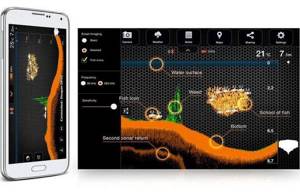
Only three brands have proven themselves well on the market and have been specializing in the production of such devices for decades: Garmin, Lowrance and Humminbird. Each manufacturer, trying to remove a competitor from the market, tries to please the potential buyer and offers a huge range of functions. By the way, the Lowrance Elite 3x echo sounder, presented in the budget class, is also positioned as a chartplotter. The fact is that the device is equipped with a built-in non-volatile memory that allows the user to load special pilot maps. True, the owner will have to become a navigator himself, since there is no GPS in the device.
Expert recommendations and feedback
Having figured out what an echo sounder is, what it measures and what its basic purpose is, all that remains is to find out the advantages and disadvantages of this device. Here you cannot do without real reviews from owners, which can be found in the media.
Oddly enough, all users recommend that beginners, when choosing a decent device, pay attention to the protection of the echo sounder from moisture. Moreover, the protection should not be from splashes, but complete – from water getting inside the case. The fact is that almost all owners had the negligence to drown the device while fishing, accidentally dropping it into the water.
The second criterion that users pay attention to is energy consumption. For some reason, many sellers are silent about the fact that an echo sounder is a powerful energy consumer that quickly discharges both the battery and batteries (the problem is relevant only for a device with a color display). There is only one conclusion here - buy an external portable battery and always take it with you on multi-day fishing trips.
Types of echo sounders
There are several types of this device, suitable for different types of fishing.
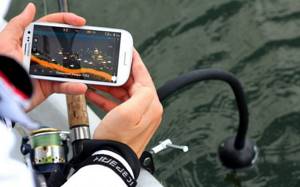
- With display. The screen can be monochrome (black and white) or color. The black and white version is more common in budget models, while the color version gives a more accurate picture. In addition, there are echo sounders with a convenient touch screen.
- With GPS navigator. This equipment is suitable for fishing in large bodies of water.
- 3D echo sounder. Provides a three-dimensional picture of the underwater world. Models of this type are quite expensive.
- Wireless compact echo sounder. With its help, you can obtain information about the underwater landscape directly from land by throwing a device tied to a fishing line into the water. However, such sonar does not detect fish.
- Forward looking echo sounder. Can provide data while the boat is moving. It has fine tuning and high cost.
